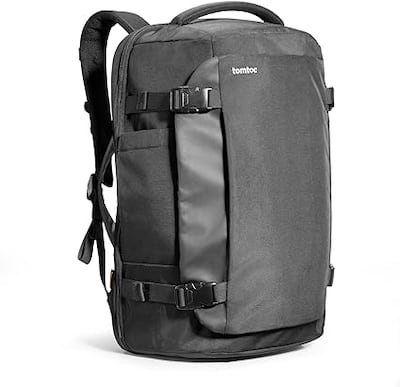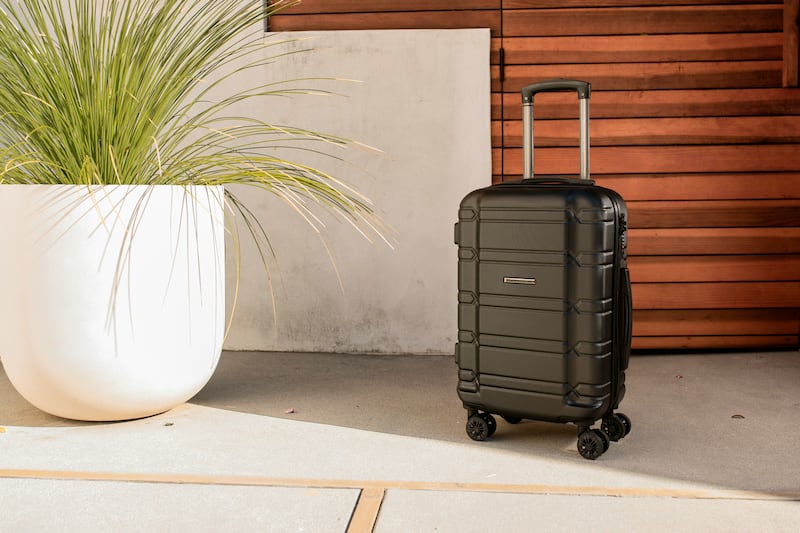The recent deluge in the UAE led to widespread travel disruptions for many, from flight diversions to delays and cancellations.
For the lucky ones that did make their flights, there's been no guarantee that their luggage arrived alongside them in their destination. Which isn't uncommon in times of travel chaos, when check-in luggage is frequently delayed.
Which is why many regular travellers opt to fly with carry-on bags only. Not only does this err on the side of caution in case of any travel disruption, it can also help you save money - particularly if you're flying on a low-frills airline.
However, flying with just a cabin bag can pose some challenges. Here are some tips to help master the art.
Check airline rules
Before the packing even starts, it's crucial to know what the airline rules for carry-on luggage are, from the accepted bag dimensions to any weight limitations. Not only will this help determine the contents of your bag, but also which type is best, with options ranging from compression bags to roll-on suitcases.
Although different airlines have different policies, the general guide is for the bag to be no more than 56cm in length and 25cm in depth, according to the International Air Transport Association. These figures include the wheels, handles and side pockets of a bag. Weight restrictions typically start at 5kg, but vary wildly depending on the airline.
At Emirates, for example, carry-on dimensions must not exceed 55cm x 38cm x 22cm. Economy class travellers can pack up to 7kg, while premium economy passengers can bring on up to 10kg. Etihad's baggage restrictions start at 7kg for economy passengers, and bags cannot be bigger than 56cm x 36cm x 23cm. Premium passengers have larger allowances.
Rules may also apply as to the contents of the bag with bans existing on certain items, such as carrying liquids or powders larger than 100ml, although again this depends on which airline you're flying with and where you're flying from.
Choose the right bag

The first rule of smart packing is to make a list of items you will need for your trip. Carry-on luggage would typically only include essentials such as passports, electronics and chargers, medicine and cash, but if you're only bringing cabin bags then you'll need to accommodate a lot more.
Once you've made your list, adjust your choice of bag accordingly. There are a plethora of options available – from mini trolleys on wheels - ideal if you don't want to carry heavy loads around, to backpacks and duffels that are easier if you're going to be doing a lot of moving around on your trip.
It's worth checking every feature of a bag to be more strategic while packing your essentials. For travellers bringing gadgets such as a laptop or tablet, bags with dedicated tech compartments make sense, as they allow for easier access on the go.
Frequent flyer Stephen King, who lives in Dubai, says he loves going on multi-country trips and finds a backpack with good lumbar support and multiple pouches is "more practical". Compared to trolley suitcases, backpacks allow for easier access to cables, books and other gadgets, he adds.
While function is key, comfort is also an important factor when choosing carry-on luggage. Bags with wheels may be better suited for some, especially while carting them around the airport and through long corridors.
For those going the backpack route, King recommends waterproof covers to use in your travel destination. “I have a black waterproof cover that goes over the entire backpack. Not only does this provide protection in case of bad weather, but it’s also additional security in case of pickpockets,” he explains.
Pack smart
Fitting everything in one bag may sound daunting, especially to maximalist packers. But there's a way to cover all the basics (and more).
Shelina Jokhiya, a professional “declutterer” and author of Can You Find It In Five Seconds?, recommends using packing cubes and compression sacks. Although there might not be a difference in terms of weight, they allow for more space, she says.
“You can even put clothes in compression bags, especially woolly ones so they shrink in size," she adds. "Some fabrics will get wrinkled, but it's worth it if you are trying to save space." For toiletries, she recommends buying refillable travel containers.
@evermorejomarch this has saved me SO much room in my oack while travelling #solotravel #traveltiktok #traveltips #whatsinmybag #travellergirl #backpackingtips #backpackinglife
♬ liquorice - linno 𑄽ৎ
Ipshita Sharma, a freelance writer and travel agent who has travelled to 32 countries, suggests utilising the Marie Kondo roll-up method for packing clothes and other fabrics.
“Keep some spare money within the rolls," she adds. "Roll socks together inside one particular shirt. You can also roll entire outfits at once so it's easy to co-ordinate."
Layering is important when packing a carry-on bag. Things less likely to be whipped out go at the bottom, for example. This is where the packing cubes also come in handy. As such, the bag is more organised and it's easier to unpack when you get to your destination.
Garment choices are also paramount to saving space. Choose lighter clothes if you can and wear the heavy ones. If you’re heading to a cold destination and a heavy jacket is needed, simply take it on board rather than trying to stuff it into the bag. Choose clothes that can be styled in multiple ways. Many hotels will have laundry services - come to terms with the fact that you might re-wear a piece of clothing, and always opt for versatile shoes.
And when it comes to make-up, hair and skincare, consider multipurpose products, such as foundation or moisturiser with sunscreen or shampoo bars rather than a liquid variant. Or skip these in your carry on and just buy them at your destination.






